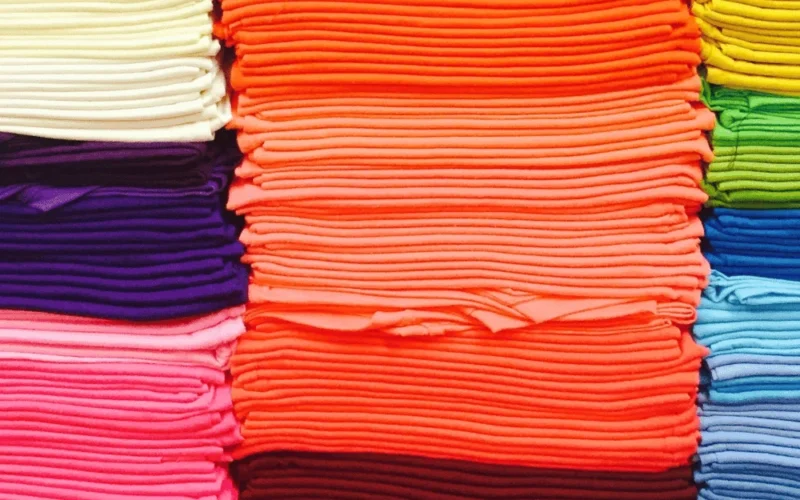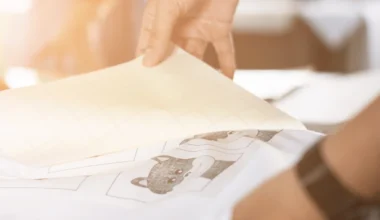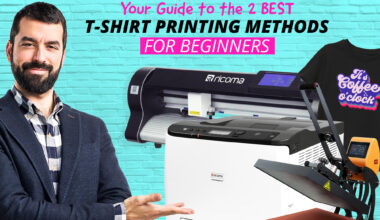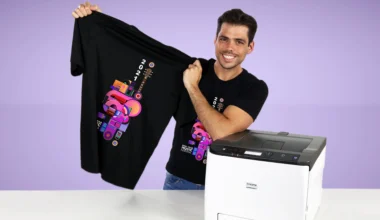If you’ve ever wondered how those cool designs end up on your favorite t-shirt or bag, you might have heard about heat transfer vs screen printing methods. But what are they, and how do they differ?
Let’s dive into heat transfer vs screen printing and help you figure out which one is best for your business!
What is Heat Transfer?
Heat transfer involves printing a design onto a special paper using a printer, then transferring that paper onto a fabric using heat and pressure, typically with a heat press machine.
How Does Heat Transfer Work?
A designer typically starts by creating their design on a computer, which can be a logo, artwork, or any image they want on their fabric. From there, they’ll print the design onto special transfer paper using a white toner transfer printer, making sure to use the right paper for the substrate they’re printing on.
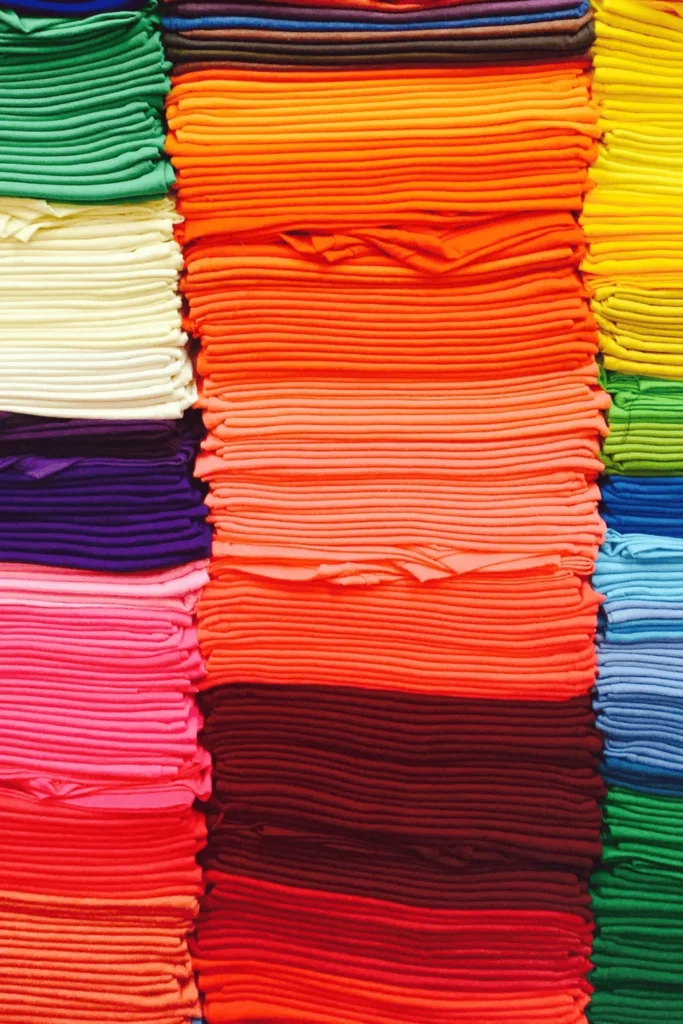
Heat transfer, sometimes known as 2-step heat transfer, is a printing method where you begin by printing an image onto specialized paper using a white toner transfer printer. After printing the image, you’ll utilize a heat press to heat transfer the image onto a surface.
Before you can heat transfer the image onto a surface, you must first print the design onto a transparent transfer sheet. Next, you’ll use a heat press to transfer the image from the transparent sheet onto an adhesive sheet.
That’s why this method is referred to as “2-step” heat transfer.
What is Heat Transfer Best For?
Heat transfer is great for…
- Small batch printing. Because this is typically a manual process, it’s great for small Etsy shop owners who enjoy hand-crafting their own creations.
- Intricate designs. Because you’re manipulating the clothing with your hands, it’s easier to work with intricate designs when you’re working with a heat transfer machine, allowing for more detailed designs and making sure they look pristine.
- All sorts of fabrics. Cotton, polyester, blends — you can use all sorts of fabrics with heat transfer!
What is Screen Printing?
Screen printing involves printing design directly onto different surfaces, like fabrics, paper, and plastics (compared to heat transfer, which requires transfer paper).
How Does Screen Printing Work?
A designer printing using screen print (vs heat transfer) will create a stencil of the design through a fine mesh screen (typically made of polyester or steel). The areas where the ink should pass through are left open, while the rest is blocked off.
They’ll then apply their desired ink onto the screen, using a squeegee to force it through the open areas of the stencil onto the substrate.
The ink will need to cure (or dry), using a heat source or by air drying, depending on the type of ink used. For multi-colored designs, the creator will apply each color using a separate screen and stencil until the design is complete.
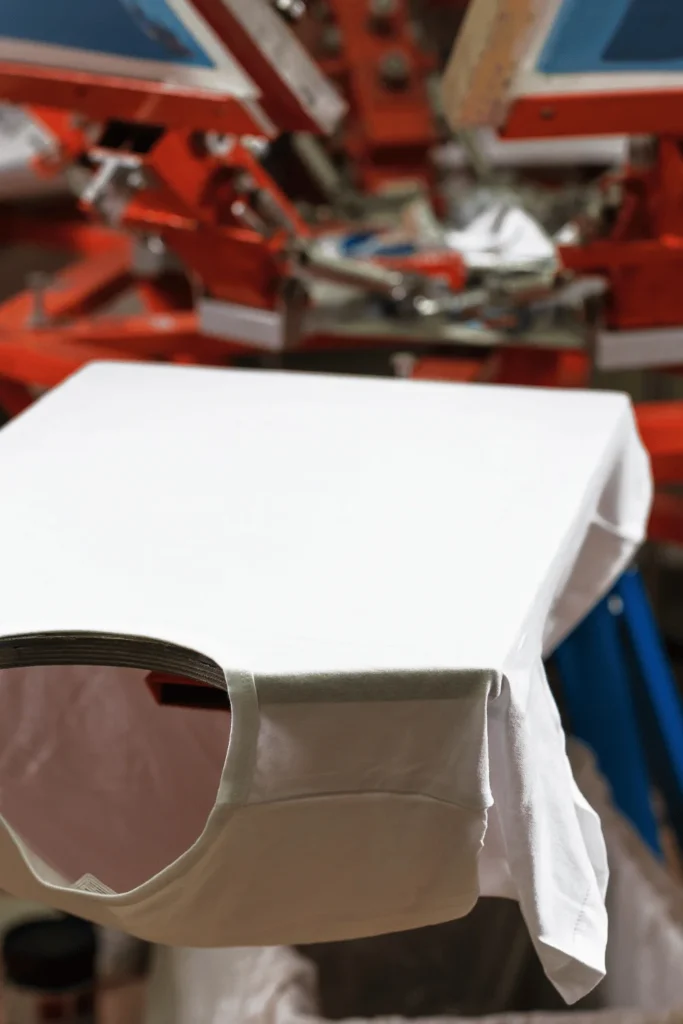
What is Screen Printing Best For?
Screen printing (vs heat transfer) is best for…
- Bulk order printing, specifically for the same design, since a machine is doing a lot of the work!
- Bold and colorful apparel. Screen printing is widely used for custom t-shirts, hoodies, and other apparel items that need to be able to withstand repeated washing.
- Signage. Because the printing is so vibrant, screen printing is often used for outdoor signage, posters, and banners due to its durability and ability to create vibrant, eye-catching prints.
Heat Transfer vs. Screen Printing: Biggest Comparisons
Quality
When it comes to heat transfer vs screen printing quality, both are good for finer designs, but both differ in durability.
Heat transfer is great for intricate designs with fine details and smaller bulk orders. It can usually have a slightly raised texture, which some might like because it feels more durable, but others might not because it’s a bit more difficult to wash if it’s fabric.
Screen printing is typically more durable compared to heat transfer, especially when it comes to washing and abrasion resistance. Additionally, screen printing usually has a smoother, more even finish, while heat transfer can sometimes have a slightly raised texture.
Time
Screen printing is generally faster for large orders due to its ability to print multiple garments at once. Heat transfer is more time-consuming, especially for large quantities; however, it might require more machine set-up time.
Bulk Creation
Screen printing is usually better for quantities of prints due to its efficiency and speed once it’s set up. Heat transfer requires more hands-on work, so is better for smaller orders and for creators who like hand-making their designs.
Color Options
Screen printing has the ability to Pantone match for precise color reproduction — it’s great for spot colors and specialty inks. Heat transfers can sometimes result in slight color variations. Screen printing can also have more flexibility in things like special effects like metallic inks, glow-in-the-dark inks, and textured finishes.
Cost
Screen printing definitely requires a larger initial investment in equipment, screens, and inks compared to heat transfer. Heat transfer is a great option if you’re just starting out and don’t need all the bells and whistles yet — as all it requires is a heat press, transfer paper, and ink.
Screen printing tends to have a lower per-unit cost because it’s more efficient than heat transfer.
Frequently Asked Questions: Heat Transfer Printing vs Screen Printing
How hard is it to do screen printing?
Screen printing can be a little more of a learning curve for beginners because requires specialized equipment like screens, squeegees, and a printing press, as well as a good understanding of color mixing and registration.
But with practice and the right resources (like the Ricoma Prints YouTube channel!) you can get the hang of it much easier than if you were going at it alone.
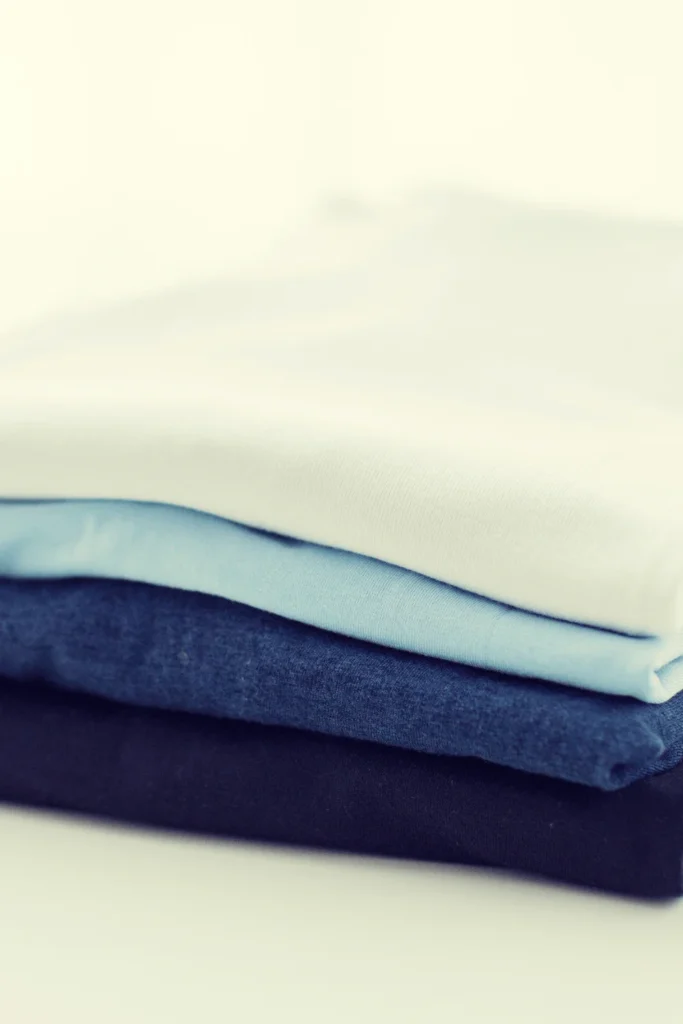
How hard is it to do heat transfer vs screen printing?
Heat transfer is generally easier to learn and can be done with minimal equipment — a heat press, a transfer printer, transfer paper, and ink.
Heat transfer is a great option for beginners or those looking for a simpler printing method!
How can I start a printing business from home?
The first step to starting a printing business from home is investing in a high-quality printing machine, suited for your business. If you’re starting a small, handmade clothing shop, heat transfer might be your best bet, as it’s user-friendly for small shops and beginners. If you’re looking to scale operations further, then screen printing might be better for you.
So, which is best for you in the great heat transfer vs screen printing debate?
Check out our White Toner Transfer Printer + Heat Press Bundle for everything you’ll ever need for printing from home!
